Organic Vegetable Garden Diary, May 20, 2015
Another week’s progress to document in my Garden Diary.
I don’t know about your location, but once winter decided to hit the road, we have had a really nice spring. Day time highs have hovered in the high 70s/low 80s, but nighttime temperatures have remained on the cool side (THE perfect weather) and we’ve had more than our fair share of rain, all of which have encouraged my garden to really take off. I’m enjoying documenting the progress from one week to the next.
My cucumbers have grown another foot and half over the past 6 days.
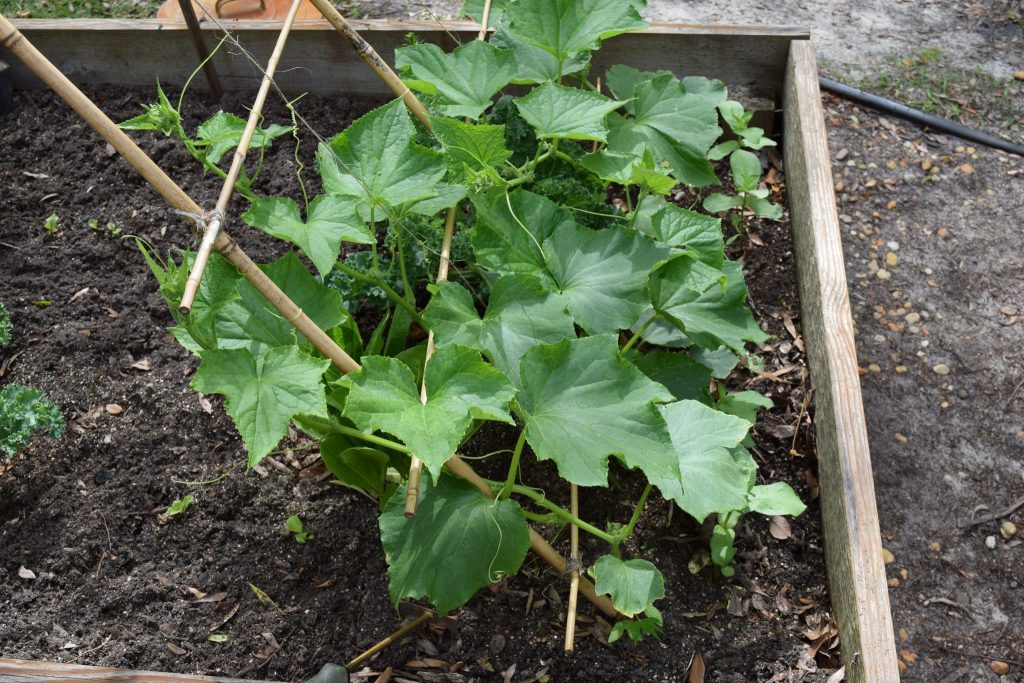
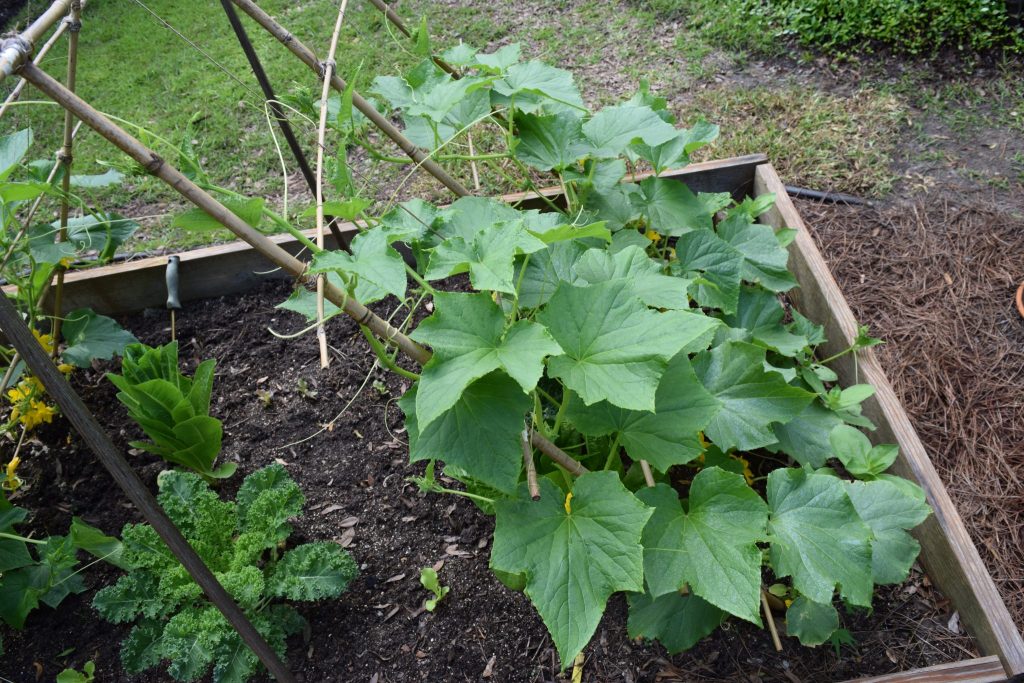
And I’m really optimistic that the cucumbers on the trellis will form a shield against the sun for my tender lettuces.
The tomatoes are going great guns as well, however, when I looked back on my past garden diary, I realized that my garden is a good month behind where it usually is by this time of the year. This observation was echoed by my friends at Progressive Gardens recently. That’s good for my lettuce and kale, but not sure what that’ll mean long-term for my tomatoes and other heat-loving vegetables/fruits.
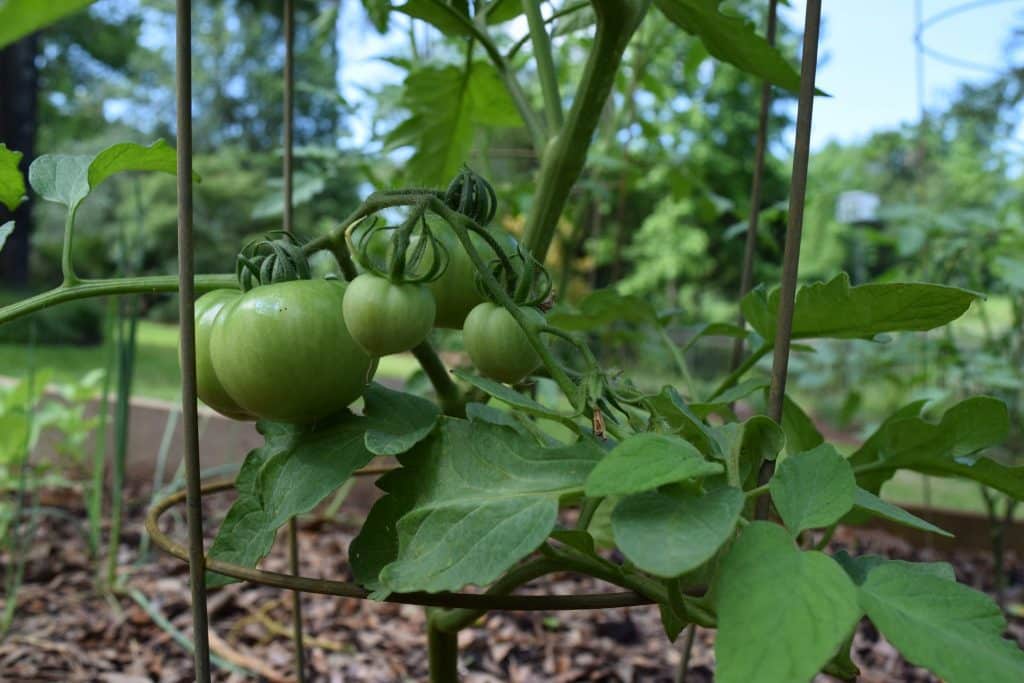
Some of these are affiliate links and I will earn a small commission off of the sale of these products, but the price you are charged is not affected. You can see my full disclosure policy here.
In an attempt to attract more pollinators, I planted several pollinator attracting flowers within and around my vegetable beds this year. At each corner of my cucumber trellis, I planted Scarlet Creeper Vine. This vine is known to attract bees and hummingbirds. Since it seems my cucumbers really struggled to get pollinated the last couple of years, I’m hoping that by having the Scarlet Creeper mingling with the cucumbers, my pollination rate will increase. I’ll keep you posted. I’ve also planted bee balm and lavender right around my vegetable garden, as well as sweet alyssum, cleome, yarrow and purple coneflower throughout my backyard.
Something new I’m trying this year is having Zinnias planted with the vegetables into several of my garden beds this year. Not only do I really love Zinnias as a cut flower (their jewel-tones scream ‘Summer!’), but they are great companion plants for several reasons:
- Their bright colors attract pollinators, thus luring them to do the pollination work for your nearby vegetables as well. Bees and butterflies (including Monarch Butterflies) are attracted by Zinnias
- While I can’t absolutely verify why this might be, it seems that the flowers of the zinnia deter cucumber beetles and tomato hornworms. I’ll let you know about the hornworms…
- Zinnias attract Hummingbirds, which then feed on mosquitoes, aphids, gnats, midges, caterpillars, flying ants, weevils, small beetles, whiteflies and insect eggs.
- They attract parasitic wasps, which are some of the coolest critters out there if you want to control garden pests. Their whole ‘thing’ is a little ‘zombie-esque’ to me, but still, very cool. What happens is the wasps, lay their eggs inside or on the host insect, the eggs hatch and the larvae then consume the host insect. There are a variety of species, but the list of insects controlled by the parasitic wasps is quite long. Here’s just a handful of the nasties that are taken care of by parasitic wasps: aphids, cabbage worms, Colorado potato beetle, cucumber beetles, cutworms, gypsy moth caterpillars, Japanese beetles, squash vine borers, and tomato hornworms. Here’s a photo to show you what a parasitized hornworm will look like. If you see a caterpillar or other pest with these white eggs on it, leave it alone. You’ll soon be the beneficiary of a bunch of parasitic wasps to do the dirty work for you. Believe me, if you’ve ever had to pull one of these hornworms off of your tomatoes, you’ll pray for parasitic wasps. And an important note…the wasps are incapable of stinging you!
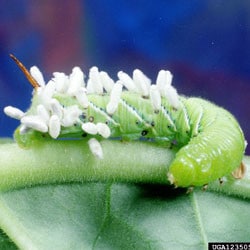
Speaking of hummingbirds, in addition to the joy of watching them darting around the yard, they have benefits you might not have considered. Hummingbirds can pollinate flowers that can’t be reached by other birds. They don’t have the disadvantage of a small beak or large body when it comes to spreading pollen. This makes it easier to grow long-tubed flowers that need pollination.
They eat frequently, dining not only on nectar but also insects and pollen. Their fast heartbeats and breathing require a lot of food so with a good number of birds you will have some natural assistance with certain small pests. In addition to attractive plants, another means of attracting hummingbirds is a hummingbird feeder.
Attracting beneficial insects and pollinators is a cornerstone of our organic garden. I’ve been known to purchase ladybugs and praying mantis eggs, and would definitely consider purchasing parasitic wasp eggs. However, I’d much prefer to attract these friendly gardeners to my yard naturally.
Here are just a few of the beneficial insects I’d love to have in my garden and some of the plants that attract them:
Ladybugs (eat primarily aphids):
- Fern-leaf yarrow
- Common yarrow
- Carpet bugleweed
- Basket of Gold
- Golden marguerite
- Butterfly weed
- Coriander
- Queen Anne’s lace
- Fennel
- Prairie sunflower
- Rocky Mt. penstemon
- Marigold “lemon gem”
- Dandelion
- Spike speedwell
- Dill
For the Ladybugs, I will also keep a small saucer with some rocks that have a wee bit of water in it within my vegetable garden.
Parasitic Wasps (see above for what they eat):
- Mint
- Aster
- Angelica
- Chervil
- Fennel
- Dill
- Cilantro
- Zinnia
Syrphid Flies ( aphids, scales, mealybugs and small caterpillars)
- Dill
- Cosmo
- Sunflower
- Pincushion Flower
- Sweet Alyssum
In general, these predatory insects are very small, so they need flat flower clusters for the nectar and pollen that fuels them for their hunting forays. So its a win-win-win…you get pretty flowers to look at, the beneficial bugs get good food and then they go to work cleaning the bad guys from your garden. How do you attract and keep beneficial insects in your vegetable garden?
Right now, subscribers to Nourish and Nestle will receive a free, downloadable Measuring Equivalents Chart overlaid on a watercolor lemon. You can see it here. Sign up to our email list (on my right sidebar) and we’ll send it to your inbox within 24 hours! If you are already a subscriber and would like a lemon measuring equivalents chart, send us an email with ‘lemon chart’ in the subject line and we’ll send you one too!
Please come visit again. The easiest and most convenient way is to sign up on our email list and whenever there is anything new, we’ll send Nourish and Nestle updates directly to your inbox.
Until next time,


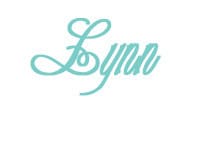


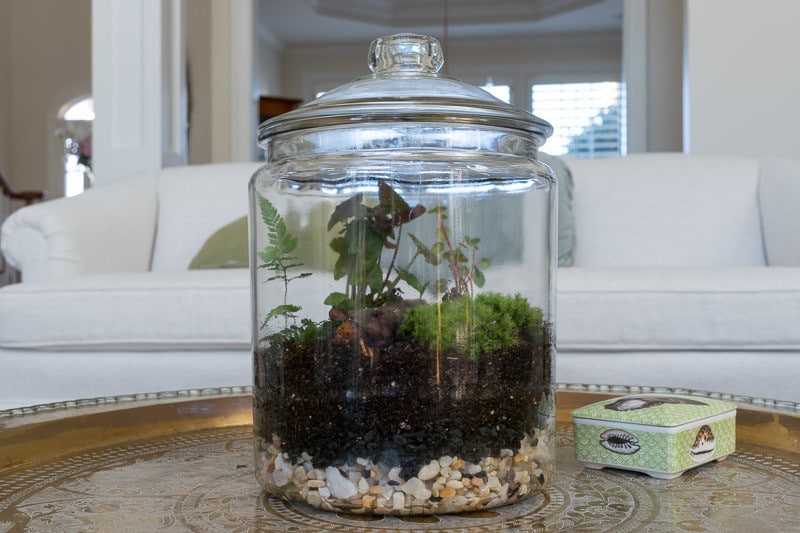
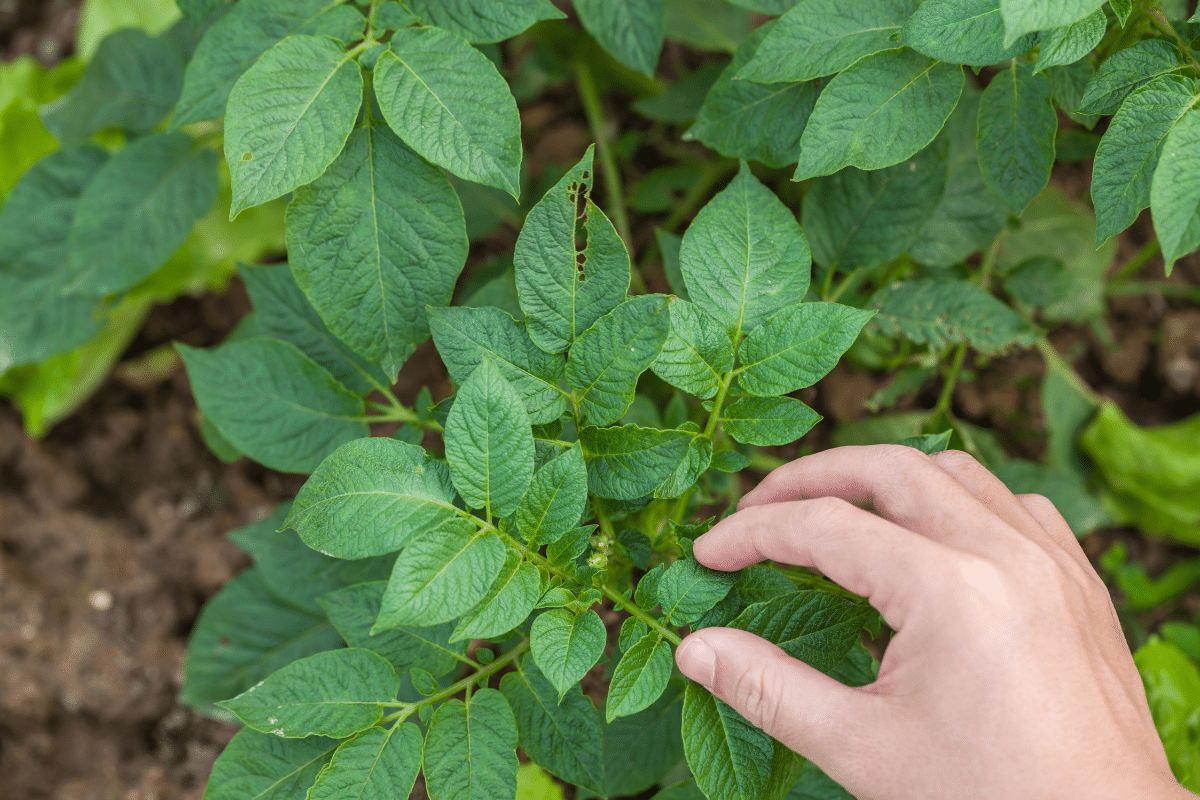
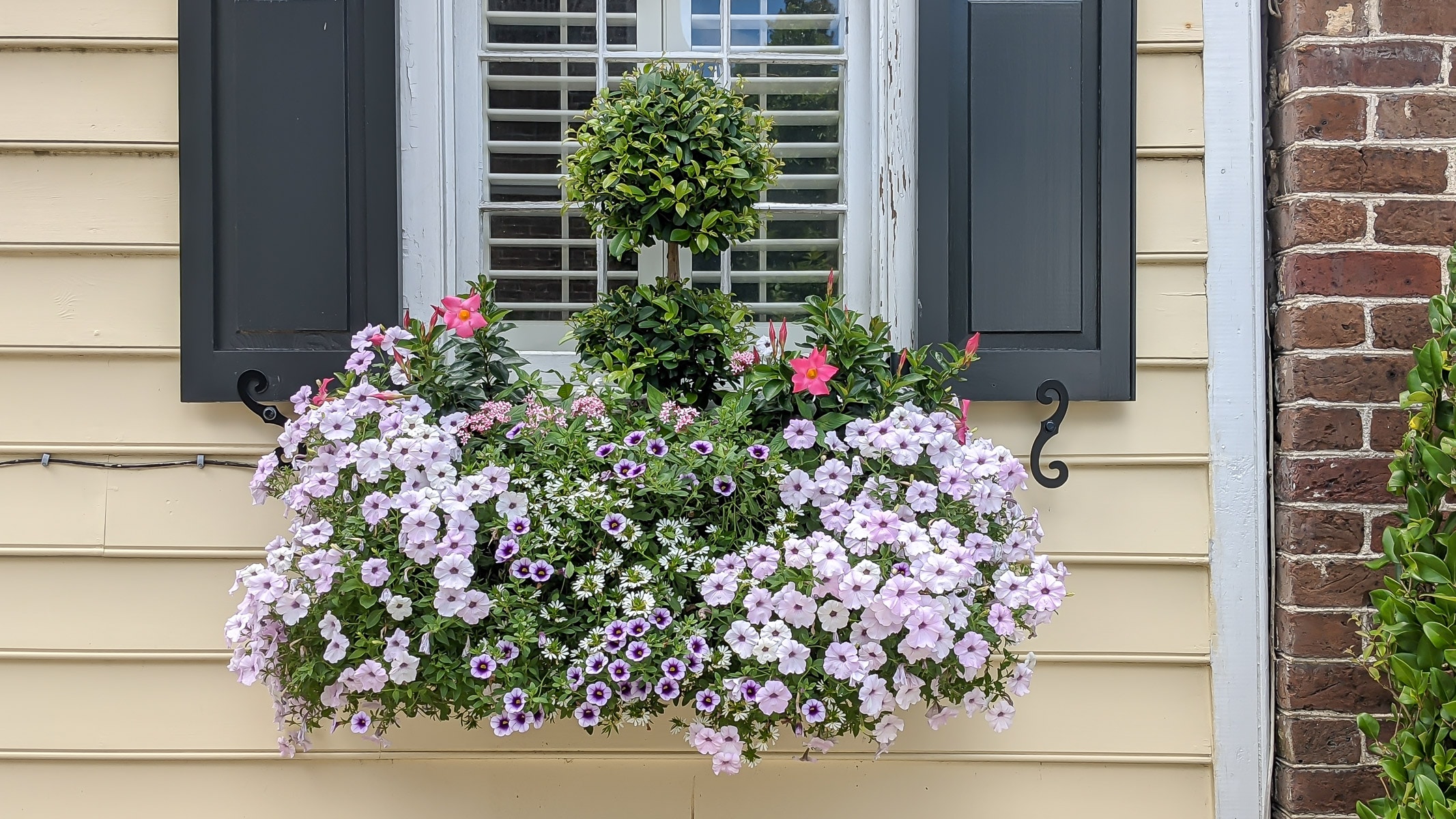
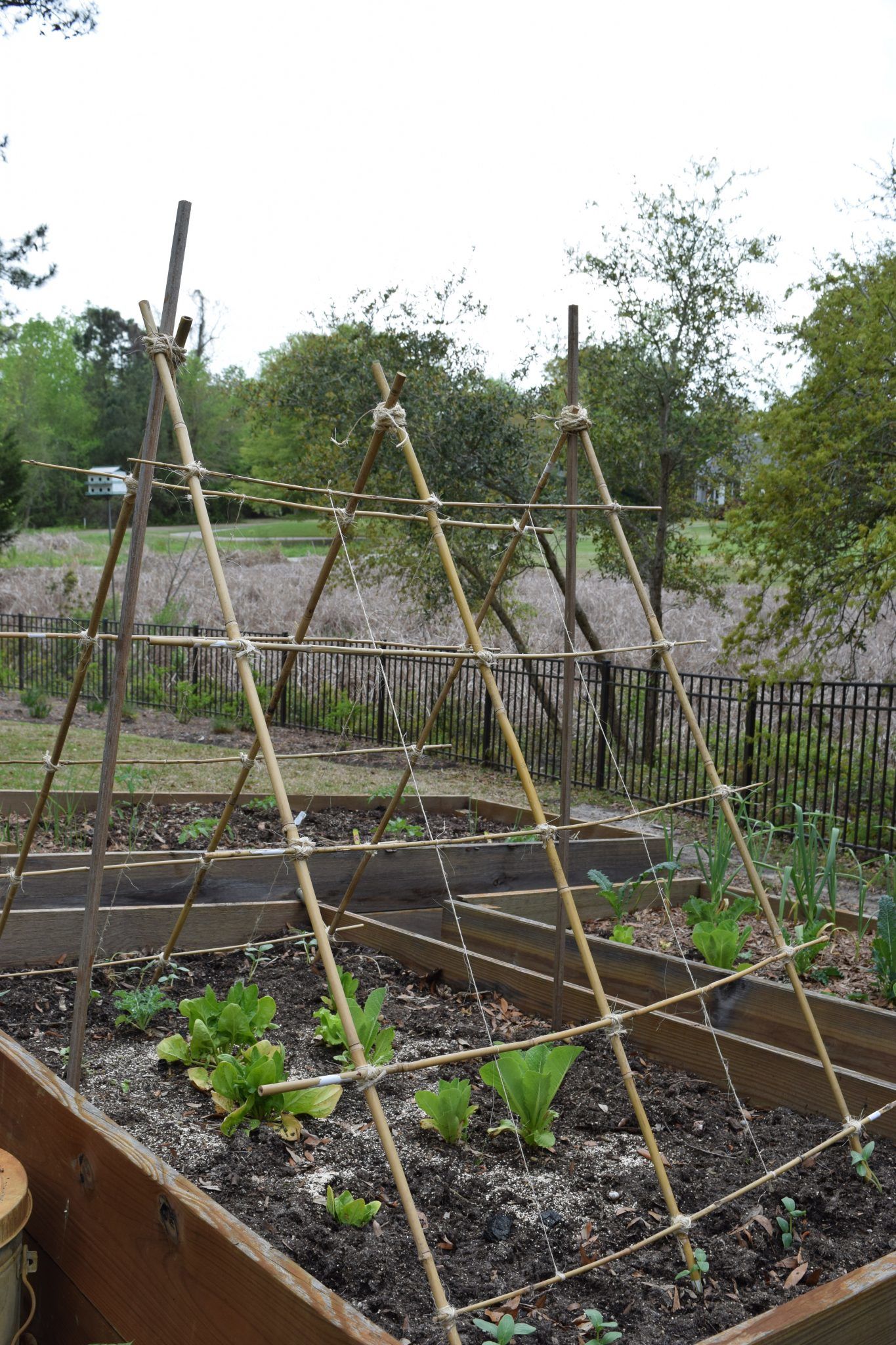
Thank you for sharing this! I just had my one, singular strawberry eaten by something and my heart was broken. Definitely going to plant some of these to see if it helps!
Your garden looks beautiful! Do your tomatoes ever get hit with blight? If so, how do you fix it? We caved in the summer and used a spray, but I’d love to use something organic or homemade instead!
Hi Misty, thanks for the garden compliment. I love the way it looks right now as a result of our cooler temps and rather heavy rainfall. My tomatoes have not been hit with blight, which is rather surprising because I do have an overhead sprinkler, as opposed to a soaker hose, and we live in a very humid climate. I do believe that the blight spores stay in the soil for a bit, so all the more reason to rotate your crops. Buying blight resistant strains is another suggestions. Here’s a link to a discussion about those strains. http://www.growveg.com/growblogpost.aspx?id=334
I also read about a baking soda and an aspirin spray that may be helpful, but don’t have any concrete experience with the. One last piece of advice, make sure your soil is healthy by getting it tested and amending it as necessary. We’re big believers in compost tea for healthy soil.
Cheers! Lynn
Beautiful pictures of your flowers and veggies Lynn. I am a newcomer here…
Love your blog!
Welcome Marta! And thank you for your kind words. I am so glad to have you stopping by and I will do my best to make it worth your while! Have a great day!
Lynn
You are a wealth of knowledge friend! Thanks for joining the FTAF party!
Hi Chellie…Thanks for the compliment! But you’re no slack either. I’ll see you this week at FTAF.
Hugs, Lynn